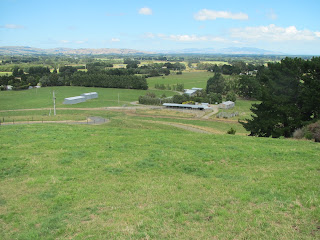Simple low cost On farm management changes can substantially contribute to a better environmental outcome. This is a really powerful & positive message to come out of the Massey University’s Fertilizer & Lime Research Centre’s conference held last week at Massey’s campus at Palmerston North, NZ.
Over 3 days there were papers from researchers, consultants, farmers, Regional Councils, the fertilizer industry & environmental groups…..most papers focussed on issues related to efficient nutrient management & the environmental consequences of mismanagement. The most positive take home message was that if we all work together as a community (that includes farmers & town people) we can greatly improve the NZ environment including the much discussed water quality. That’s a powerful & positive message too!
There is no better example than the great presentation by Dr Richard McDowell from AgResearch at Invermay.
Richard stated very clearly that smart on farm changes to farm business management could reduce Phosphate (P) losses at little cost to a level near the “natural” baseline. The “natural baseline” is the level that would occur if there was no farming on or near the waterways.
Essentially it is a matter of identifying P losses, locating the “sources of P loss” & then understanding the transport mechanisms e.g. runoff causing the elevated water phosphate contamination. So there are losses in the soil related to excessively high Olsen P. This will be different for each farm & soil type based on the characteristics of the soil especially the P retention of individual soils. Grazing management especially immediately prior to or during storm rain events (pugging or poaching soil surface) can increase the runoff of phosphate….again controllable by good management practices. Using water soluble P fertilizers at or about storm rain events can also increase runoff. Effluent management is obviously a potential risk that can be managed by commonsense i.e. low dose rates over a larger area away from wet soils & storm events. All of these examples can be implemented at little cost before the event by some smart thinking & understanding the risks.
So 3 clear recommendations from Richard’s paper at the FLRC conference for farmers were:-
1. There is NO reason to go above the recommended agronomic efficient Olsen P levels for soils on your farm. Check the recommendations.
2. There is sound argument for using low water soluble P fertilizers (reactive rock phosphate) if you have suitable soils & are in the right recommended rainfall band.
3. Fenced buffer strips/riparian strips along waterways & streams are essential & necessary. Stream fencing needs to follow recommended protection distances either side of the stream & ideally should include mixed tree planting to help stabilize banks & keep the stream water cool.
There were other suggestions like adopting low rate effluent applications & the possible use of constructed or natural wetlands.
Richard’s paper was clearly giving a message that smart farm management “acting carefully & anticipating possible risks” could minimise the potential environmental damage of P runoff into waterways. Identifying “critical source areas” is something every farmer can do….then seek advice as to how you can minimise the risk.
This is largely commonsense stuff but ultimately is smart “Risk Management”. The dairyfarmers I have met want to do the right thing for the environment so knowing that with phosphate most of the risk can be resolved by changes to daily management should be very reassuring.
For Nearly a Century, Hollywood Has Left Its Mark on the Pop Charts
-
Movie soundtracks have sometimes eclipsed the films that inspired them in
the first place.
1 hour ago







No comments:
Post a Comment